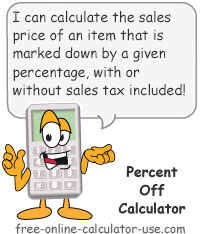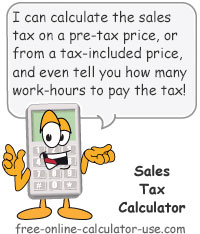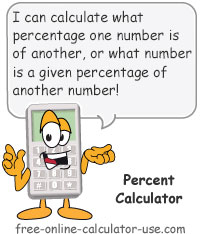IMPORTANT: Numeric entry fields must not contain dollar signs, percent signs, commas, spaces, etc. (only digits 0-9 and decimal points are allowed).
Click the Terms tab above for a more detailed description of each entry.
Step #1:
Enter the amount on the price tag of the item to be marked down.
Step #2:
Enter the advertised mark down percentage of the item.
Step #3:
If the item is a taxable item, enter the sales tax percentage.
Step #4:
Click the "Calculate Discounted Price" button.





Follow me on any of the social media sites below and be among the first to get a sneak peek at the newest and coolest calculators that are being added or updated each month.